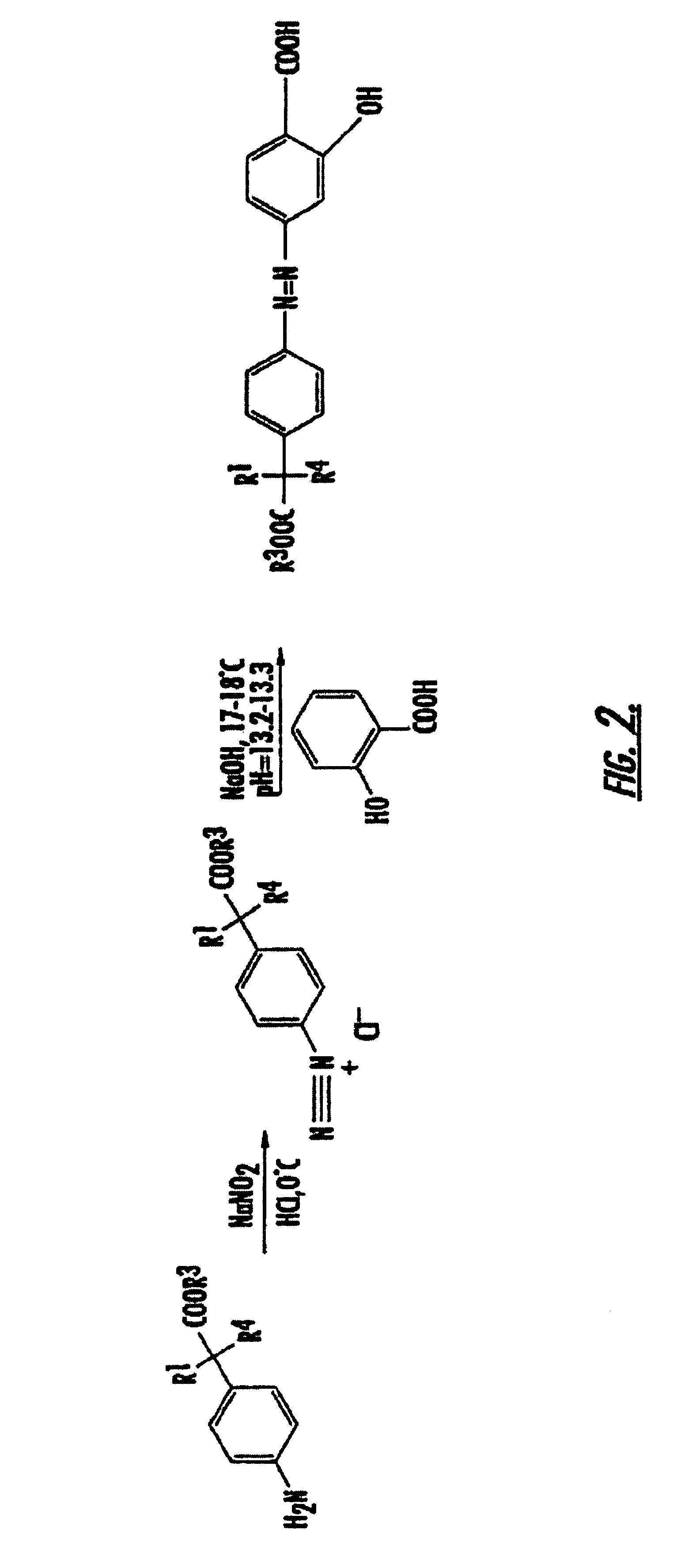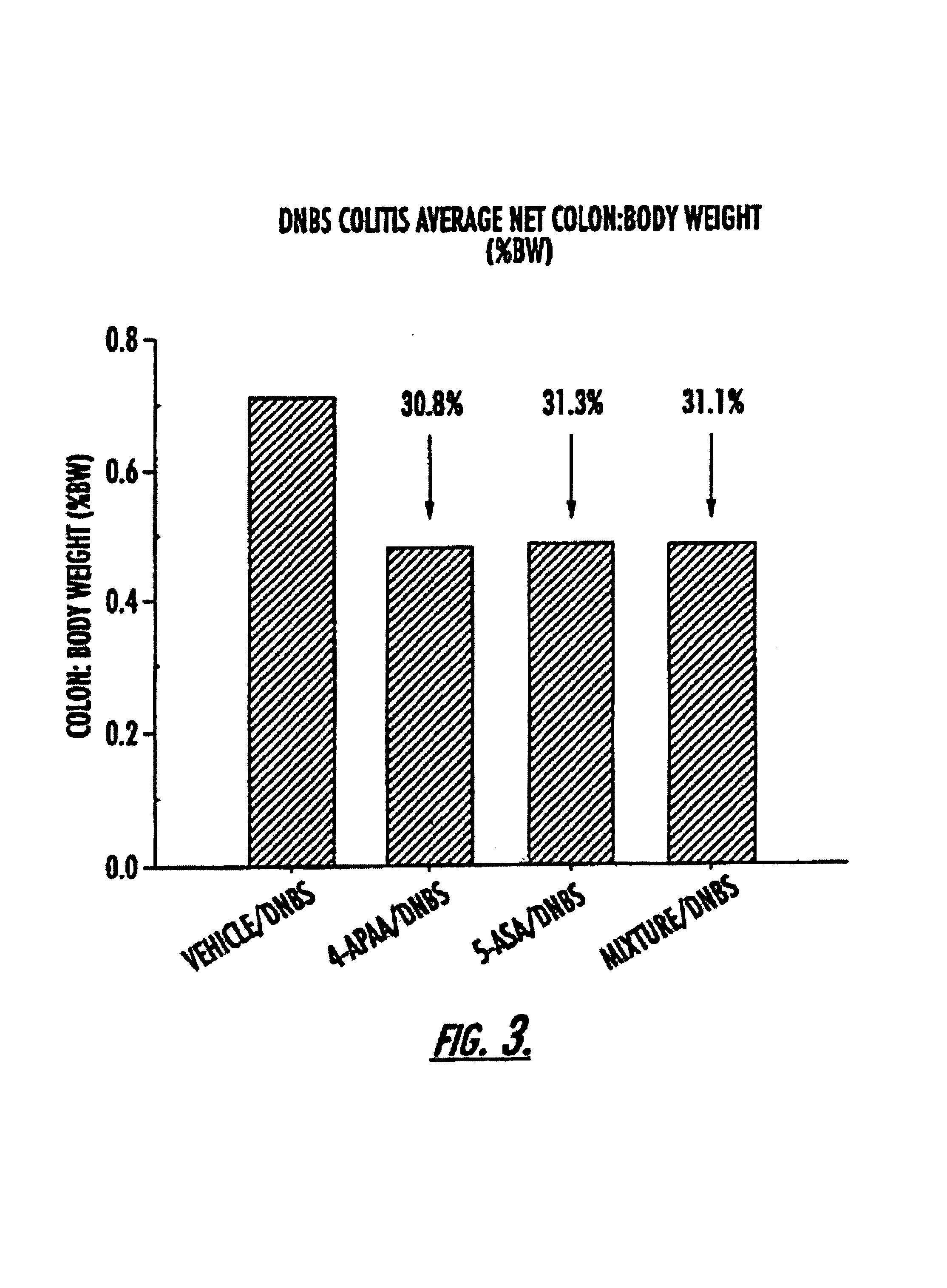Methods of treating inflammatory conditions of the gastrointestinal tract using 4-APAA and compositions thereof
a technology of gastrointestinal tract inflammation and composition, applied in the field of immunomodulatory compounds, can solve the problems of difficult to predict the bioavailability of the various mesalamine formulations, adversely affecting the amount of mesalamine that reaches the lower gi tract, and difficult to determine the proper dosage for a given individual
- Summary
- Abstract
- Description
- Claims
- Application Information
AI Technical Summary
Benefits of technology
Problems solved by technology
Method used
Image
Examples
examples 1 through 4
Synthesis of Compounds of the Present Invention
[0056]Melting points were taken on a Laboratory Devices Mel-Temp II capillary melting point apparatus and are uncorrected. 1HNMR spectra were obtained on a Varian Unity 600 MHz spectrometer. Chemical shifts (δ) are reported as parts per million (ppm) relative to the internal standard tetramethylsilane. Ultraviolet and visible spectra were obtained with a Beckman DU 640i spectrophotometer. Infrared spectroscopy was obtained on a Nicolet Impact 410 and fast atom bombardment (FAB) mass spectroscopy data was obtained by M-Scan Inc. All reagents were used as received from Aldrich Chemical Co.
examples 1 and 2
Synthesis of 5-[4-(1-Carboxy-Ethyl)-Phenylazo]-2-Hydroxy-Benzoic Acid
example 1
2-(4-Amino-phenyl)-propionic acid
[0057]A 500-mL, oven dried, three-neck flask equipped with a stir bar, was charged with (R,S) 2-(4-nitrophenyl)propionic acid (5.00 g, 25.6 mmol), absolute ethyl alcohol (200 mL), and palladium (10 wt. % on activated carbon, 0.27 g, 2.56 mmol). A hydrogen environment was introduced into the flask and the mixture was then stirred at ambient temperature for 6 hours. The crude reaction mixture was filtered through Celite and the ethyl alcohol was removed under reduced pressure. The crude product was dried under vacuum overnight resulting in a light yellow solid (70% yield, 2.98 g): mp 125-129° C., 1H NMR (DMSO-d6): δ 1.24 (3H, s), 1.26 (3H, s), 3.41 (1H, s), 3.43 (2H, s), 6.46 (2H, d, J=7.6 Hz), 6.91 (2H, d, J=7.6 Hz); IR (KBr) 2596, 2189, 1630, 1581, 1441, 1375, 1277, 1192, 1052, 876 cm−1; FAB-MS (NBA) m / z 165 (M+H)+.
PUM
| Property | Measurement | Unit |
|---|---|---|
| weight percent | aaaaa | aaaaa |
| molar ratio | aaaaa | aaaaa |
| molar ratio | aaaaa | aaaaa |
Abstract
Description
Claims
Application Information
 Login to View More
Login to View More - R&D
- Intellectual Property
- Life Sciences
- Materials
- Tech Scout
- Unparalleled Data Quality
- Higher Quality Content
- 60% Fewer Hallucinations
Browse by: Latest US Patents, China's latest patents, Technical Efficacy Thesaurus, Application Domain, Technology Topic, Popular Technical Reports.
© 2025 PatSnap. All rights reserved.Legal|Privacy policy|Modern Slavery Act Transparency Statement|Sitemap|About US| Contact US: help@patsnap.com



